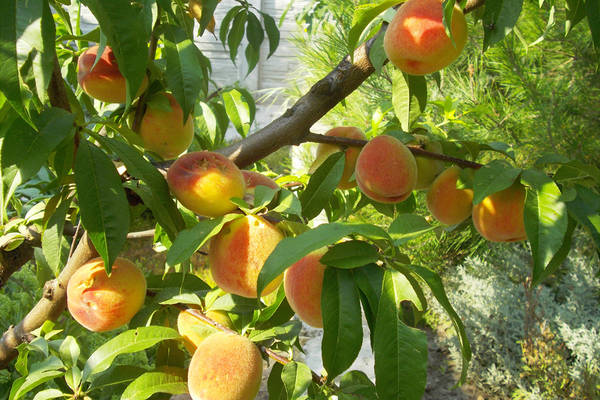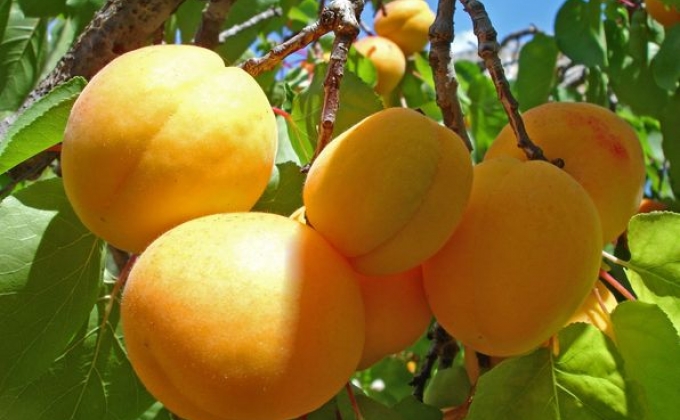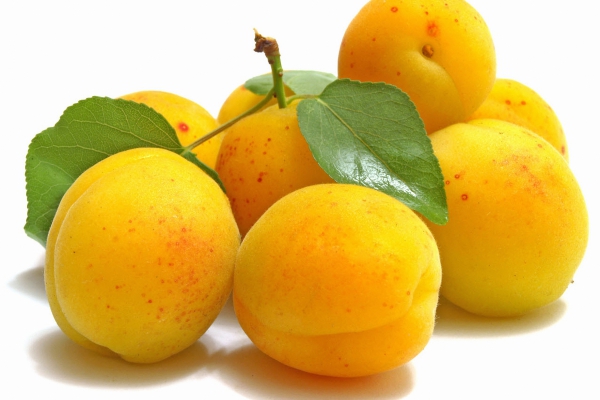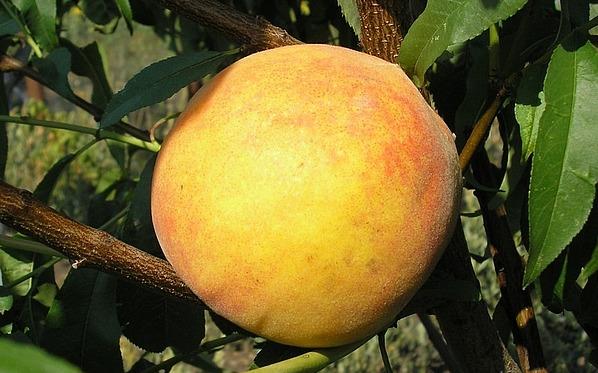Description and features of the Donetsk yellow peach variety
Description
Fruits of all varieties of peach are valued for their juiciness, amazing taste and aroma, they are used not only fresh, but they make delicious jams, jam, jelly, candied fruits, add to cakes and pastries. And a lot can be said about the benefits of peach - it helps to improve the activity of the cardiovascular system, normalize liver function, promotes the formation of hemoglobin, has a cleansing property, is widely used in dietary nutrition and as a general tonic. All these qualities are inherent in such a wonderful variety of peach as Donetsk yellow. This high-yielding variety, which appeared in the Donetsk office of the Institute of Horticulture. It was bred by the efforts of the breeder L.I. Taranenko in 1960. The specialist managed to create a new high-quality variety of peach from those seeds that were brought from the city of Gelendzhik. For a long period of time, the variety was multiplied by specialists from the Donetsk nursery, and a little later it became popular not only in the territory of Donbass and other regions of Ukraine, but also in Russia.
All these qualities are inherent in such a wonderful variety of peach as Donetsk yellow. This high-yielding variety, which appeared in the Donetsk office of the Institute of Horticulture. It was bred by the efforts of the breeder L.I. Taranenko in 1960. The specialist managed to create a new high-quality variety of peach from those seeds that were brought from the city of Gelendzhik. For a long period of time, the variety was multiplied by specialists from the Donetsk nursery, and a little later it became popular not only in the territory of Donbass and other regions of Ukraine, but also in Russia.
Fruit tree of Donetsk yellow type is a tall crop with a fairly dense round crown... The leaves are also large in size, have a beautiful dark green tint, and the annual shoots, on the contrary, are light green in color, but you can see an interesting carmine tan on them. The peach flowers are also very large and have a pleasant pink tint. Donetsk yellow is a self-fertile variety, its fruits weigh up to about 150 g, some can reach 220 g.
The fruits are characterized by a round shape, sometimes they are in the form of a wide oval, somewhat flattened on both sides, and a specific abdominal suture is also quite visible on the surface. The fruits have a pale yellow skin with an exquisite blurred blush on the surface. In underripe peaches, the skin color is greenish-yellow - the same color as the flesh of the fruit. It is dense in consistency; it has a yellow-orange color right next to the peel. The taste of Donetsk yellow can be called quite sweet, having a pleasant acidity. The bone in the fruit is large; it is almost impossible to separate it from the pulp. When tasting by experts, this peach variety received a good score of 4, 9 points.
In terms of the duration of the growing season, this fruit tree variety is very close to the Kiev early one, but its need for the presence of heat at this time is greater. Just like the control variety Kievskiy early, Donetskiy yellow begins to bear fruit no earlier than the third year after planting, and the maximum amount of harvest can be expected in the fourth year. The early maturity is average; in years favorable for the wintering of flower buds, the amount of harvest from each fruit tree can be about 50 - 60 kg.
Pros and cons
Most of the peach varieties today are adapted to our climatic conditions.  But still, before purchasing any kind of peach tree for your garden plot, you should familiarize yourself with its features. The Donetsk yellow variety has a lot of undeniable advantages, for which it has been loved by experienced and novice gardeners for many years.
But still, before purchasing any kind of peach tree for your garden plot, you should familiarize yourself with its features. The Donetsk yellow variety has a lot of undeniable advantages, for which it has been loved by experienced and novice gardeners for many years.
Among them is a good resistance of the culture to severe frosts. As experience shows, in one of the years the trees of Donetsk yellow froze by 1, 7 points, while in varieties Kievskiy early and Redhaven this indicator was more than 2 points. In addition, the variety we are describing has excellent restorative properties - even those trees that freeze out to the level of snowfall are able to fully recover their strength and give a good harvest the next year. If we talk about the winter hardiness of flower buds, then Donetsk yellow has higher rates than most other large-fruited varieties.
It has large fruits of high quality, which are distinguished by good taste. Also, fruits tolerate transportation normally, but only if they are transported unripe, since when fully ripe they can become covered with unpleasant dark spots.
The disadvantages include the non-simultaneous ripening of the fruit pulp, as well as possible damage by powdery mildew and curly leaves.
In order to prevent curliness, which most often leads to twisting and dying of leaves in early May, makes the fruits small and inhibits their normal ripening, takes away strength for proper growth and development from the tree itself, preventive treatment with special preparations should be carried out.
Peach Pruning Video
The video demonstrates how to correctly prune a peach and what tools are needed for this.
